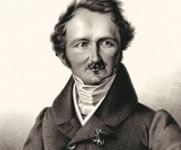Different Styles & Periods
- In the beginning was the castle
- A declaration of love to antiquity
- From Renaissance to Romanticism
- Baroque centre of culture and enlightenment
- Baroque magnificence
- Baroque gardens in the north
- Palatine baroque and Francophile elegance
- Late-baroque treasure troves
- Baroque to Biedermeier in Berlin and Brandenburg
- The Golden Age of Classicism
- Jewels of historicism
- Neo-Gothic romanticism
Baroque gardens in the north
The lavish baroque style also left its mark on the north of Germany, a region normally associated with restraint. With treasures dating from the Stone Age through the Middle Ages to the modern period, the palaces of Schleswig Holstein and Lower Saxony are important cultural centres with valuable holdings of art works from all periods. Their splendid gardens – laid out in perfect symmetry by famous botanists and great gardeners – are a match for any in France or Italy. Although these baroque gardens were originally modelled on French and Italian Renaissance gardens, they were expanded by absolutist princes into vast statements of their own importance, and nature was used to express dominance and prosperity.
Gottorf Palace
Show on map »
Eutin Castle
Show on map »
Clemenswerth Hunting Lodge & Park, Sögel
Show on map »
Celle Palace
Show on map »
Fortified island of Wilhelmstein, Wunstorf
This artificial, fortified island in Lake Steinhude near Hannover was built for Commander Wilhelm zu Schaumburg-Lippe in the second half of the 18th century. In those days it was considered impregnable and was the site of a military school. Visitors can still travel to the island in traditional sailing boats where they are greeted by the sight of cannons and casemates.
Show on map »
Show on map »
Travel Planner
Select an option...
Location
- Gottorf Palace
- Eutin Castle
- Clemenswerth Hunting Lodge & Park, Sögel
- Celle Palace
- Fortified island of Wilhelmstein, Wunstorf






